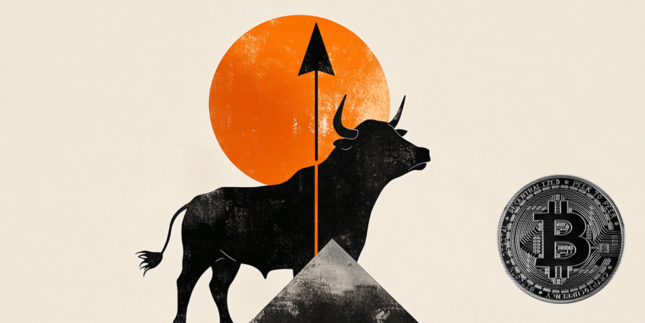Quantitative tightening and a reduction in central bank liquidity will add upward pressure to long rates. Money market rates were suppressed in 2022. In 2023, they will be free to reflect systemic risks.
The age of quantitative tightening
The Federal Reserve will continue to allow US$95bn of bonds per month to roll off its balance sheet over the course of 2023. At the end of 2022, the balance sheet will have shrunk by a little over US$0.5tn, and then a further US$1.1tn is scheduled to be rolled off by the end of 2023. That would be a cumulative reduction of over US$1.6tn if all goes to plan. One issue here, however, is the roll-off over the second half of 2023 would co-exist with interest rate cuts from the Fed. While these may seem at odds with one another, remember that balance sheet roll-off is not outright selling bonds (hard quantitative tightening), it’s just allowing the Fed’s balance sheet to normalise. That can be viewed as a separate exercise to interest rate cuts, at least for a period.
The Bank of England is also well advanced on the way to quantitative tightening. The first non-reinvestment of a gilt reaching maturity occurred in March 2022, and the first gilt sale took place in November. Overall, the Bank intends to shrink its balance sheet by £80bn a year in the first year through a mix of passive (non-reinvestments) and active (outright sales) QT. This pace may accelerate in future years, but we assume that this is the relevant pace in the near term which, in FY 2023-24, should result in roughly half of that amount in passive and half in active QT.
Net QT flow out of key European government bonds in 2023 should be limited
Source: ECB, Refinitiv, ING
The European Central Bank is only at the beginning of this process. QT will start in 2023 with a gradual phasing out of its Asset Purchase Programme redemptions (one of its two QE bond portfolios), followed by the same process for the Pandemic Emergency Purchase Programme (the other portfolio) in 2025. Assuming a 50% APP reinvestment cap for the second and third quarters, and an end in the fourth, the balance sheet reduction should amount to €156bn.
Counterintuitive and delayed effect on duration
The main effect of QE on markets is to suppress duration premium, the extra yield investors demand as compensation for taking interest risk over long periods of time. There are a variety of models that show how much lower yields are as a result of QE. In the case of the 10yr Bund, our own estimate stands at 230bp. It should also be noted that the effect of QE has typically been priced into yields before purchases actually happened. Markets are, after all, forward looking.
As a general rule, we think it is fair to think of QT as QE in reverse. In our view, central bank balance sheet moves have been well-telegraphed months in advance, and so we’ve already seen part of the increase in yields that this should trigger. Much, however, depends on how long QT lasts. In a world where the process of balance sheet reduction is allowed to continue for years, the upward pressure on yields should gradually build up.
QE has supressed Bund yields by 230bp, but don't expect a sharp reversal
Source: Refinitiv, ING
We’re more circumspect, however. We think QT poses financial stability risks and central banks will struggle to carry on once their policy focus shifts to easing. As a result, we suspect most of the upward effect on yields has already been felt. This is at least true for treasuries and gilts, and less so for euro rates. If we’re wrong, however, and central banks manage to significantly reduce their balance sheets, then some upside risk to our forecasts will have to be reckoned with.
What these models have in common is that the impact of QE is greater at longer maturities. At face value, this means QT should exert a steepening effect on the curve. In practice, it hasn’t. The reasons are manifold, but the main one is that the QT effect has been drowned out by central bank hiking cycles, typically a flattening influence on the curve. In places where the sequencing between hikes and QT is clearer, like in the eurozone, there is a better chance of that steepening effect to be visible once the ECB ends its hiking campaign over the course of 2023.
Read the original analysis: The challenges brought by shrinking central bank balance sheets
Content disclaimer: This publication has been prepared by ING solely for information purposes irrespective of a particular user's means, financial situation or investment objectives. The information does not constitute investment recommendation, and nor is it investment, legal or tax advice or an offer or solicitation to purchase or sell any financial instrument. Read more here: https://think.ing.com/content-disclaimer/
Recommended Content
Editors’ Picks

EUR/USD Gains look limited by 1.1570 Premium
EUR/USD trades well on the defensive for the second day in a row, revisinting the mid-1.1300s on the back of the continuation of the upside impulse in the US dollar. The move followed firmer US PMI data and news indicating the White House may be considering tariff cuts on Chinese imports.

GBP/USD deflates to the sub-1.3300 area, USD bulls prevail
GBP/USD remained on the back foot Wednesday, slipping below the 1.3300 level as the Greenback gained further traction. The Dollar’s solid performance was supported by strong US data and fading concerns over a renewed escalation in the US–China trade dispute.

Gold corrected extreme conditions, struggles around $3,300
Gold extended its decline on Wednesday, slipping below the $3,300 mark per troy ounce in response to reports from the media suggesting the Trump administration is weighing tariff reductions on Chinese goods, a news that revived hopes of easing trade tensions and reduced demand for the yellow metal as a safe-haven asset.

Bitcoin bullish momentum builds as premium exceeds 9% for first time in three months
Bitcoin price is extending its gains, trading above $94,000 at the time of writing on Wednesday, following a two-day rally of 9.75% so far this week. BTC rally gathers momentum as trade war fears ease, following US President Donald Trump’s downplaying of tensions with China.

Five fundamentals for the week: Traders confront the trade war, important surveys, key Fed speech Premium
Will the US strike a trade deal with Japan? That would be positive progress. However, recent developments are not that positive, and there's only one certainty: headlines will dominate markets. Fresh US economic data is also of interest.

The Best brokers to trade EUR/USD
SPONSORED Discover the top brokers for trading EUR/USD in 2025. Our list features brokers with competitive spreads, fast execution, and powerful platforms. Whether you're a beginner or an expert, find the right partner to navigate the dynamic Forex market.